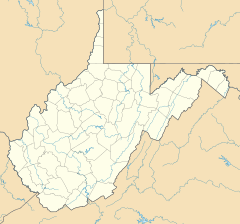Milburn, West Virginia facts for kids
Quick facts for kids
Milburn, West Virginia
|
|
|---|---|
| Country | United States |
| State | West Virginia |
| County | Fayette |
| Elevation | 1,135 ft (346 m) |
| Time zone | UTC-5 (Eastern (EST)) |
| • Summer (DST) | UTC-4 (EDT) |
| GNIS ID | 1555120 |
Milburn is a small place located in Fayette County, West Virginia, in the United States. It is known as an unincorporated community. This means it's a group of homes and people living together. However, it does not have its own official local government like a city or a town would.
Milburn was also once a coal town. This means that the community grew up around a coal mine. Many of the people who lived there worked in the coal industry.
Contents
Discovering Milburn
Milburn is a unique type of community. It is not a city or a village with its own mayor or town council. Instead, it is part of a larger county. The county government handles services for Milburn. These services include things like roads and public safety.
Where is Milburn Located?
Milburn is found in the state of West Virginia. West Virginia is in the eastern part of the United States. Specifically, Milburn is in Fayette County. This county is known for its beautiful mountains and rivers. It is also famous for its history of coal mining.
How Milburn Got Its Name
The community of Milburn gets its name from a nearby natural feature. It is named after Milburn Creek. Creeks are small streams of water. It is common for towns and communities to be named after local rivers, mountains, or other landmarks.
What is a Coal Town?
Milburn was once a "coal town." In the past, many communities in West Virginia were coal towns. These towns were built to support the coal mining industry. People moved to these areas to work in the mines.
Life in a coal town often revolved around the mine. The mine provided jobs for most of the residents. It also influenced the town's growth and daily life. Many coal towns had company stores and housing. These were owned by the mining companies. Over time, as the coal industry changed, many of these towns also changed. Some grew, while others became smaller.



